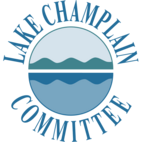Fix A Leak For The Lake
March 2011


Drip. Drip.Drip. It’s easy for the sound of a leaky faucet to become just part of the
background noise in your household. With a large body of fresh, relatively clean water like Lake Champlain so close by, water conservation often doesn’t seem like a meaningful environmental issue. Yet there are environmental consequences of ignoring that drip.
The average home wastes 10,000 gallons of water annually due to easy-to-fix leaks according to the Environmental Protection Agency’s (EPA) WaterSense Program. Nationwide, household leaks add up to more than 1 trillion gallons lost each year. The Lake Champlain Committee is one of EPA’s national WaterSense partners working to promote water conservation.
Wasting water can contribute to lake pollution. Sewage treatment facilities remove phosphorus pollution from the water that leaves our homes. However, the efficiency of pollution removal at the sewage treatment facility decreases when sewage is diluted by leaked tap water. Furthermore, municipal drinking water systems often add a phosphorus containing compound to drinking water to prevent lead from leaching from old pipes. This compound must then be removed from wastewater before it enters Lake Champlain. Of course, removal is not 100% efficient, so waste of water leads to additional phosphorus pollution.
Wasted water also means wasted energy, and this factor is probably even more significant than the extra phosphorus added to the lake. Water must be pumped from its source, often Lake Champlain, to its end use in houses, apartments, businesses, and institutions. Moving water to where it will be used is a highly energy intensive process. Letting a faucet run for five minutes uses about as much energy as letting a 60-watt light bulb run for 14 hours.
EPA has declared March 14th – 20th Fix A Leak Week, an opportunity to investigate water saving opportunities around your home. Given that each American uses an average of 100 gallons of water every day at home, it’s easy to find a few gallons to spare. We can all start saving water today with three simple steps: Check. Twist. And replace.
First, check toilets to reveal any silent leaks. Easy-to-fix household leaks can waste enough water each year to fill a backyard swimming pool. Just add a few drops of food coloring to the toilet tank and wait 10 minutes before flushing. If dye appears in the toilet bowl, your toilet has a leak. If you find a leak, visit www.epa.gov/watersense/fixaleak for do-it-yourself repair tips or contact a plumbing professional.
Second, if you don’t have them already, twist an aerator onto each bathroom faucet to save water without noticing a difference in flow. Faucet aerators cost as little as a few dollars and can save a household more than 500 gallons each year—enough to do 14 loads of laundry. For confidence that an aerator will have your faucet using 30 percent less water while still flowing with force, look for the WaterSense label, which is only awarded to products independently tested and certified to meet EPA’s water efficiency and performance criteria.
Third, replace your old showerhead with a WaterSense labeled model, which helps you shrink your water footprint while still enjoying a satisfying shower. Making this switch not only reduces a household’s water use by 2,300 gallons annually but also saves enough energy from heating less water to power a television for a year. Accompanying savings on utility bills are an added bonus.
Want to do more? Visit the Water Conservation page in the “LCC At Work” section of LCC’s website at www.lakechamplaincommittee.org for additional actions to take.
Leaky faucets may not cause as much concern as global warming or algae blooms on Lake Champlain. Yet they contribute to both, and it’s within your power to take control of the situation, and fix your leak.
Lake Look is a monthly natural history column produced by the Lake Champlain Committee (LCC). Formed in 1963, LCC is the only bi-state organization solely dedicated to protecting Lake Champlain’s health and accessibility. LCC uses science-based advocacy, education, and collaborative action to protect and restore water quality, safeguard natural habitats, foster stewardship, and ensure recreational access.
Get involved by joining LCC using our website secure form (at www.lakechamplaincommittee.org), or mail your contribution (Lake Champlain Committee, 208 Flynn Avenue - BLDG 3 - STUDIO 3-F, Burlington, VT 05401), or contact us at (802) 658-1414, or lcc@lakechamplaincommittee.org for more information.
